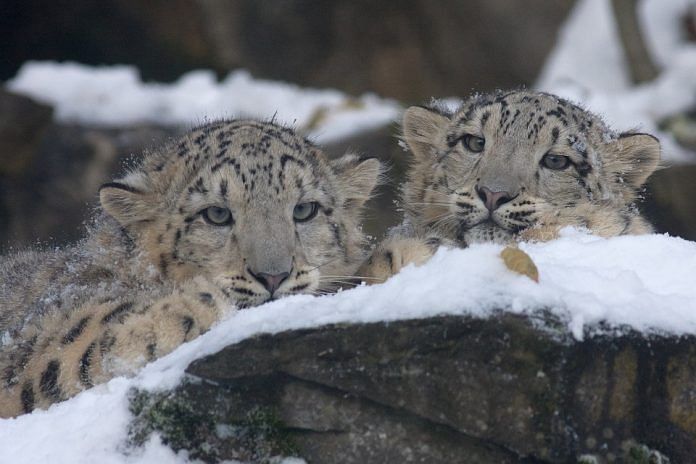New Delhi: On the occasion of International Snow Leopard Day Wednesday, the Government of India launched its first national protocol to assess the population of this elusive and endangered species in India.
The Snow Leopard Population Assessment in India (SPAI) will contribute to the global ‘Population Assessment of the World’s Snow Leopard’s (PAWS) initiative.
The launch was announced at the 4th Steering Committee Meeting of the Global Snow Leopard and Ecosystem Protection (GSLEP) where delegates from countries including Bhutan, Nepal and Mongolia discussed conservation efforts and reviewed steps to be taken for future protection of this high-altitude predator.
Snow leopards, which live primarily in the mountainous regions of Central and Southern Asia, are extremely difficult to spot making it tough to accurately estimate their population. Globally, less than two per cent of snow leopard habitats have been sampled to assess their population.
Also read: It will cost the world $300 billion to halt & fix the global warming problem
Aim to double existing numbers
The World Wide Fund (WWF) for Nature in India has estimated a population of 450 to 500 snow leopards in the country. The geographical range of these predators encompass a large part of the western Himalayas, including in Jammu and Kashmir, Himachal Pradesh, Uttarakhand and Sikkim, and Arunachal Pradesh in the eastern Himalayas.
“Enumeration of tigers was a difficult thing till 20 years ago, but now we have counted them accurately. This year, India has counted 2,967 tigers — 77 per cent of the world’s tiger population. We did this with 26,000 camera traps and many other instrumental methodologies were used to enumerate tiger population to the near exact number,” said Union Minister for Environment Forest and Climate Change, Prakash Javadekar, at Vigyan Bhavan.
Javadekar also said once the current population of snow leopards is accurately estimated, several countries that are home to this species can work together and strive to double its already existing population. He also added how the rich ecology of India and other participating nations in GSLEP can help achieve wildlife targets that western countries have not been able to.
“We also need to start thinking about developing a green economy in the Himalayan region. By preserving nature through cross-country cooperation, we can win this important battle against climate change,” he added.
C.K. Mishra, Secretary, Environment, Forest and Climate Change, said, “It is extremely important to ensure the conservation of the pristine habitat of snow leopards. The discussion however, cannot be centered just around the species of snow leopards. It must go beyond that.”
Mishra also pointed out how the Himalayas — habitat of the snow leopards — is a vital source of water for northern India and preserving its ecosystem becomes all the more important. He further said that conservation efforts must be combined with the critical issue of livelihoods of people who live in these habitats.
The SPAI is expected to scientifically establish snow leopards’ population across habitats, including both inside and outside protected areas. This initiative will yield a state-wise estimate of the snow leopard population and as a list of threats faced by this endangered species across various regions.
The programme is also expected to help identify sites in need of greater protection as well as how the species is responding to climate change. Such information is likely to form the basis of more concrete conservation plans. The SPAI guidelines brings together practices from various resources, including guidelines prepared by the Wildlife Institute of India, WWF and Nature Conservation Fund, among others.
Also read: Modi govt to soon roll out a national policy to tackle problem of stranded marine animals



